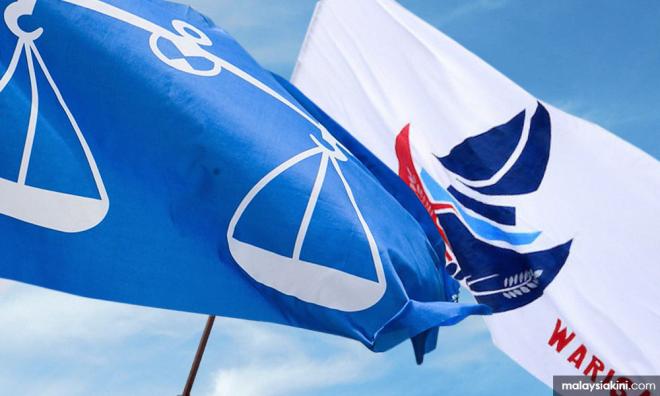
SABAH 2020 | The upcoming Sabah elections will see contests for 13 new legislative assembly seats which will expand the playing field to 73 from 60, presenting new opportunities for main contenders BN and Warisan.
As the 13 new constituencies are almost entirely carved out from existing ones, it is possible to glean the level of support for either BN or Warisan based on the 2018 voting districts data.
But first, a quick primer on how these 13 seats were created and the methodology involved.
The new electoral boundaries were drawn up in August 2016 and handed to then prime minister Najib Abdul Razak on Feb 21, 2017, but were only tabled in Parliament on July 2019 during the Pakatan Harapan administration.
To "create" a new seat, the Election Commission (EC), in most instances, simply moved voting districts in existing constituencies to the new ones. Voting district data for every election, meanwhile, are recorded by the EC and sold to the public.
Therefore, to an elections analyst, a "new" seat will still have residual data on the behaviour of the "new" voters, barring major changes to the voter list of the affected voting districts.
Such an analysis does not qualify as a logical prediction because of many shortcomings. For instance, it assumes that most voters tend to have strong party loyalties in order to make inferences.
Sabah's history, however, has shown that its citizens are more politically dynamic than their Semenanjung counterparts and are not shy to change state governments when necessary.
This analysis also does not take into account the changing political landscape, in particular the fact that BN is only left with three parties in Sabah, down from seven in 2018.
Nevertheless, past voting data will provide a strong starting point for contenders and pundits to gauge who will have the upper hand in these 13 seats at the next polls.
BN stronger in seven seats
There are 13 new legislative assembly seats are each parked under 13 different parliamentary constituencies, spread evenly across the state (see map above).
From the voting district data, voters for these 13 new seats mostly either voted BN or Warisan during the 2018 election and therefore this analysis will only consider the performance of these two entities.
The data suggest that BN has a clear advantage over Warisan in the three new seats of Pantai Dalit, Sungai Manila and Lamag where the coalition won more than 50 percent of the votes cast in the respective voting districts.
BN is also the strongest performer in the voting districts that now make up Bandau, Pintasan, Tulid and Telupid. However, BN did not cross the 50 percent threshold there.
The intricacies behind BN's relationship with fellow Perikatan Nasional allies will be closely watched during seat negotiations as some of the new seats (Bandau and Telupid) are favourable to former BN coalition parties.
In the case of Bandau, the 2018 results from all the voting districts for this new seat suggests that BN's support level is 44 percent. However, upon closer inspection, the Bandau seat is carved out from Matunggong and Tandek - both won by then BN coalition partner Parti Bersatu Sabah (PBS).
Although PBS is part of the PN federal government, their allegiance in Sabah is uncertain as the party has announced that it will use its own logo during the elections and was eyeing 30 seats.
Some of the abovementioned seats are almost certain to be handed to Sabah BN's anchor party Umno, as suggested by past voting trends.
In the case of Lamag, carved out from the adjacent Kuamut constituency, the voting districts here make the new constituency an Umno stronghold. The data showed that of the voting districts that were transferred to Lamag, 59 percent of voters there backed the BN candidate the last time around.
Sabah BN and Umno head Bung Mokhtar Radin has already announced that he will be fielded in Lamag. The last time he tried his luck in Kuamut was in 1994, where he was unsuccessful. That seat is part of the Kinabatangan parliamentary constituency, which he has represented since 1999.
Meanwhile, the voting data also suggests that Warisan should fare well in the new seats of Darau, Tanjung Keramat, Limbahau, Segama and Kukusan as at least 50 percent of voters in the respective voting districts there had backed the party in 2018.
During the 2018 election, Warisan and their allies performed well in the south-eastern parts of the state where Warisan president Mohd Shafie Apdal has a major influence. This Bajau-majority area is where the new seats Segama and Kukusan are located.
Shafie has been the Semporna MP since 1995. The six-term MP who is also a native of Semporna with Bajau lineage is one of the community's most famous icons.
According to data, Warisan secured about 57 percent and 53 percent of the votes in 2018 in the voting districts that made up the new constituencies of Segama and Kukukan respectively.
Meanwhile, Darau, Tanjung Keramat and Limbahau which are located along Sabah's west coast can be seen as the safe seats for Warisan as the vote shares were averagely more than 55 percent.
In 2018, Warisan won 58 percent of the votes in the voting districts that now make up Limbahau. Limbahau was carved out of Kawang and Pantai Manis, where the voting patterns were heavily inclined towards Warisan.
There is one new seat - Bengkoka - which is too close to call based on the data alone which suggests that both BN and Warisan are of equal strength there - each winning 40 percent of the vote two years ago.
The deciding factor may turn out to be supporters of Lajim Ukim.
Lajim Ukim was the former deputy minister of housing and local government, and also Umno's Beaufort MP. He quit BN and joined PKR in 2012 and became the party's state chief. However, he quit PKR four years after and formed Parti Harapan Rakyat Sabah (PHRS).
Meanwhile, Bengkoka was carved out of the existing Banggi and Pitas seats. Lajim's party had secured slightly over 20 percent of the vote in Pitas.
PHRS has since dissolved and its members have joined Bersatu. Should Lajim's supporters back BN - a Bersatu ally - in the upcoming election, then BN will stand a good chance of securing Bengkoka.
Upsetting the balance
Given that these additional 13 seats were mostly carved out of existing ones, a cursory glance at the voting data would also suggest that some established politicians will face a tougher challenge in the upcoming election.
For example, the new Sungai Manila constituency will likely make it more difficult for incumbent Sungai Sibuga assemblyperson Musa Aman to retain his seat.
This is because five of the voting districts which made up 37 percent of the votes there that were in Musa's favour have been moved to Sungai Manila while two relatively large voting districts that mostly voted for Warisan remain in Sungai Sibuga.
Musa has been the Sungai Sibuga representative since 1994.
The composition of the new Kukusan constituency - made up of voting districts from Tanjong Batu, Merotai and Sebatik - will also make it more difficult for BN to retain the Tanjong Batu seat as many of their supporters have been shifted to the new constituency.
In closing, this article has demonstrated that although Sabah has 13 "new" constituencies, it is possible to estimate the level of support for BN and Warisan based on past voting data which can be used by contenders as a starting point to plan their campaign.
However, the above information, to reiterate, cannot be used as a prediction for the coming Sabah elections' final outcome.
There is also a possibility that the elections might not be held if the court decides on Monday in favour of Musa's suit, which, among others, seeks an injunction that will prevent the election from being held. - Mkini


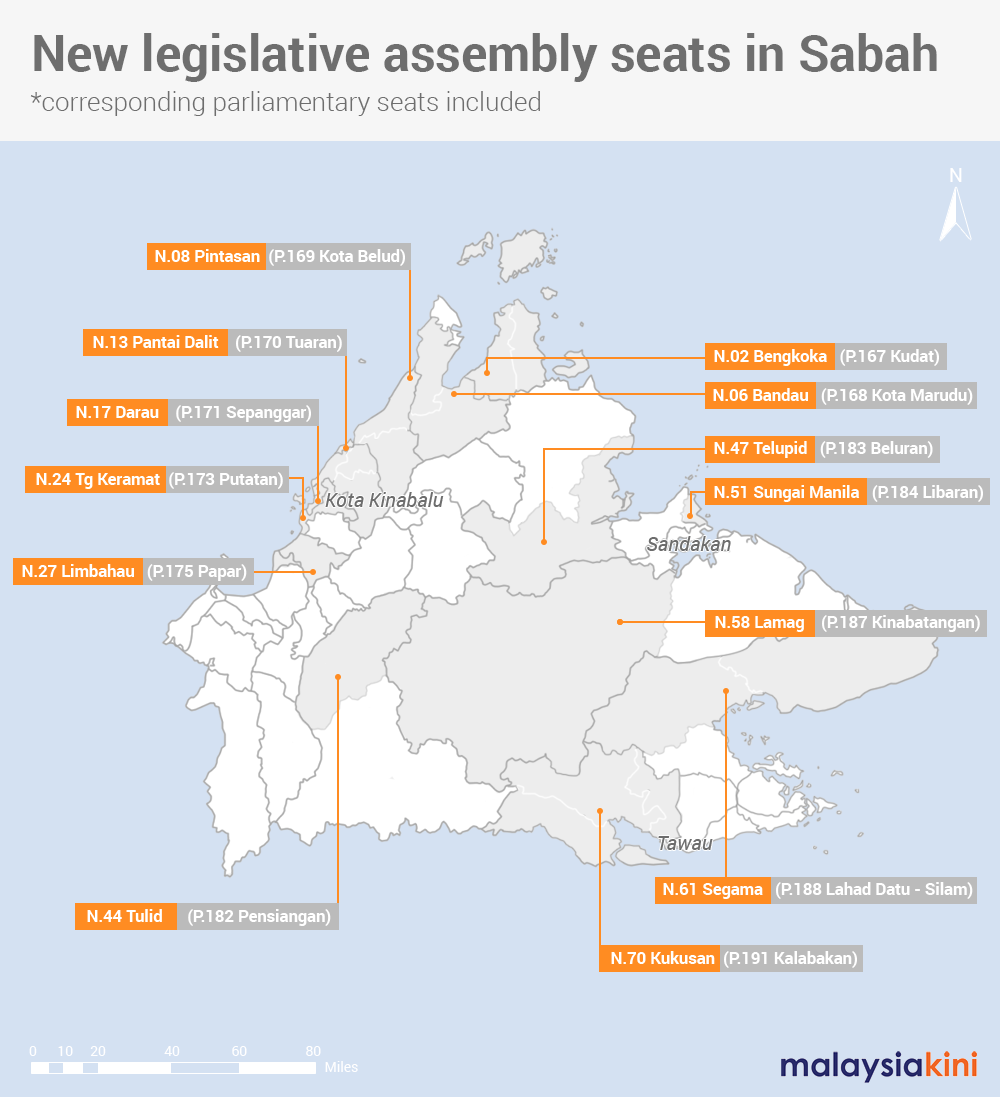
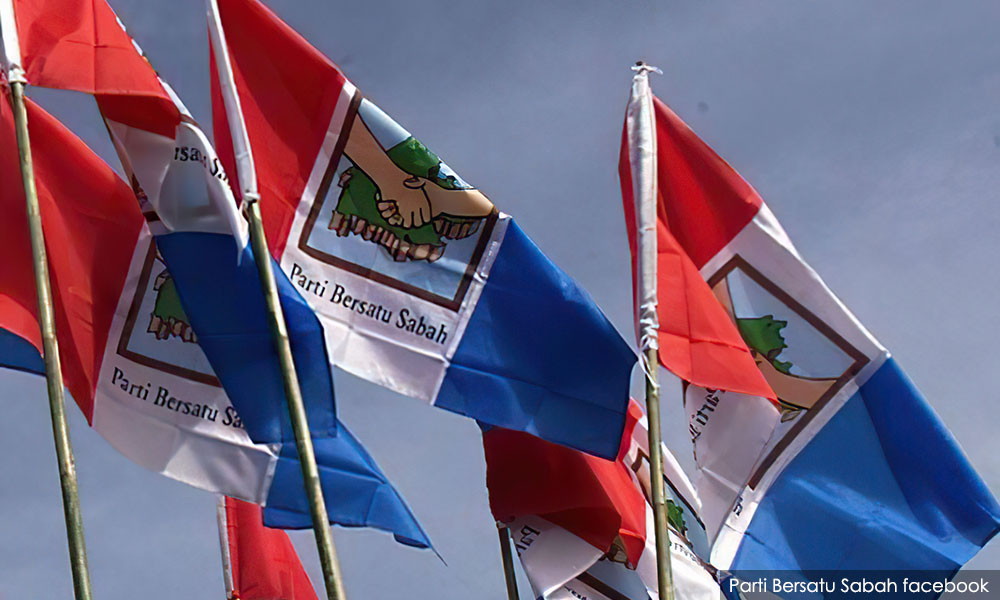
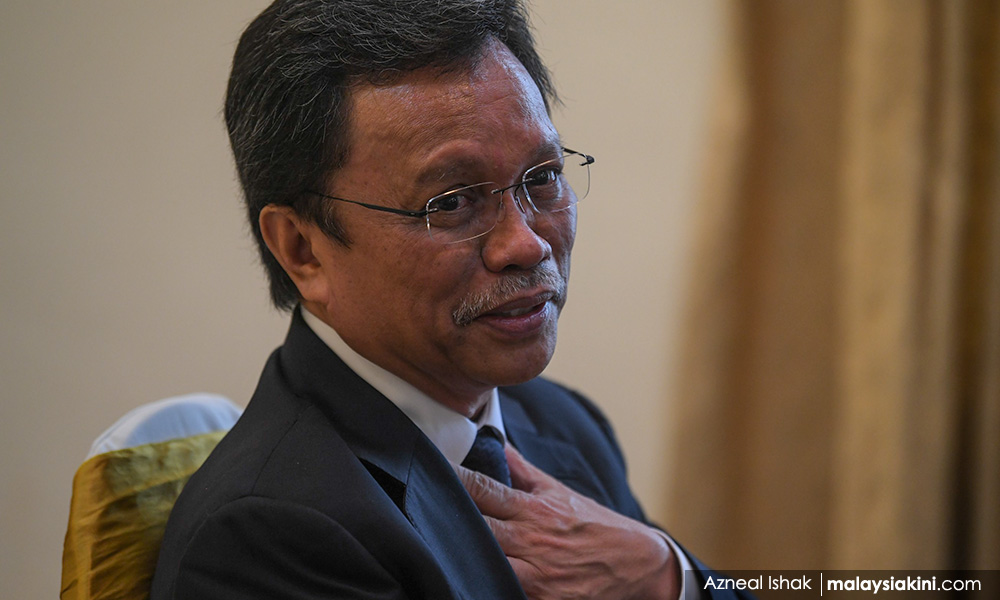
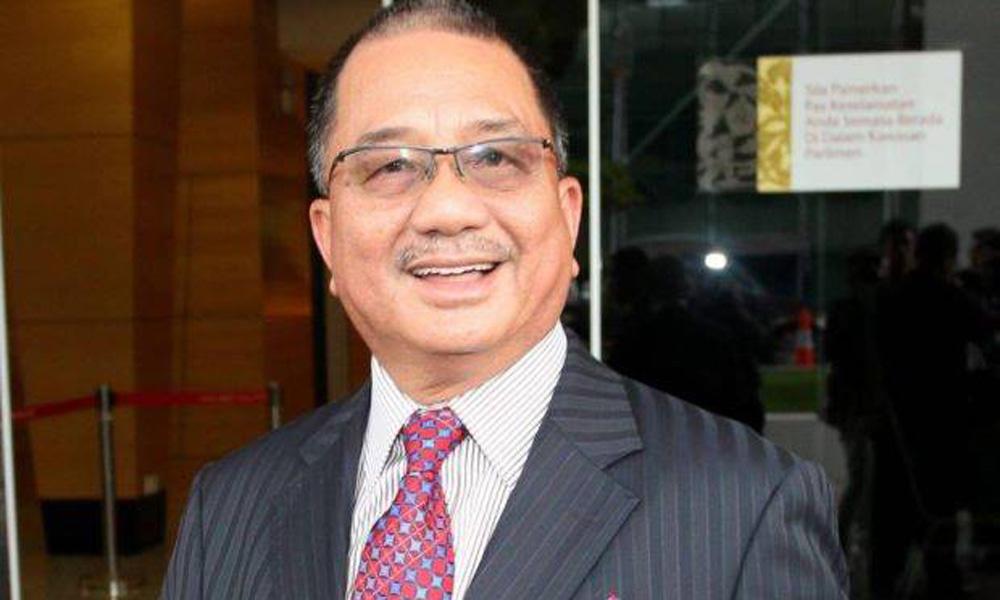
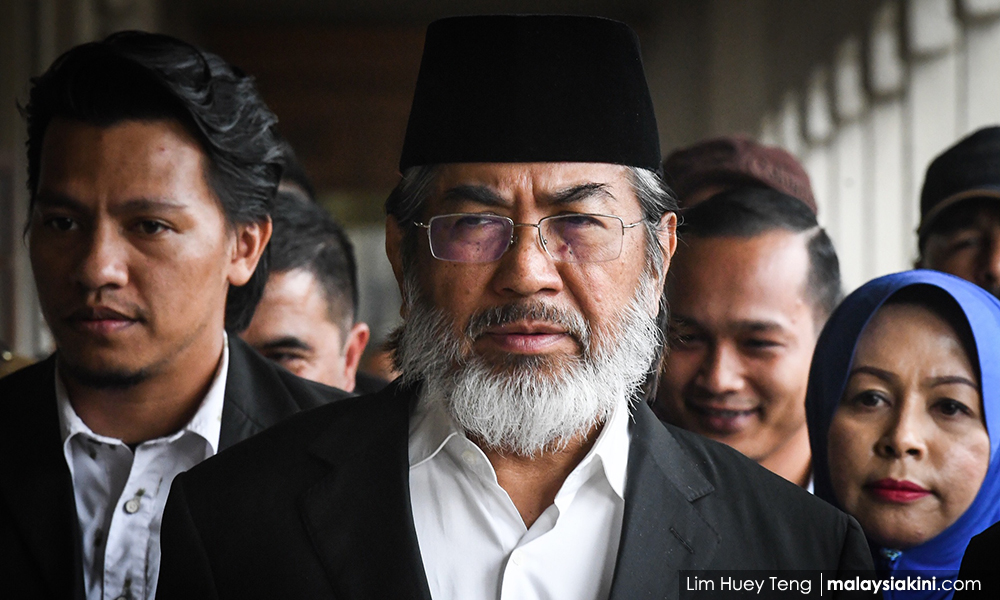
No comments:
Post a Comment
Note: Only a member of this blog may post a comment.